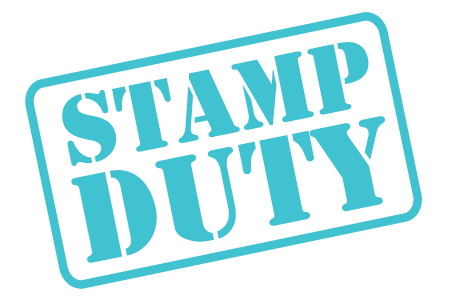Stamp duty for overseas buyers
- The rate for a non-UK resident is an additional 2% surcharge on top of the standard rate. Click here to find out how a non-UK resident is classified.
- Top Tip: HMRC gives you the option of claiming back stamp duty if you become a resident in the 12 months after the purchase of a residential property.
- Property value plays a crucial role, with tiered rates applied based on the value of a property.
- Multiple dwellings relief (MDR) will be abolished from 1st June 2024.
- If you receive rental income on a UK property but live overseas, you'll need to register for the Non-Resident Landlord Scheme
Back in April 2021, an additional 2% surcharge for overseas buyers of property in the UK came into effect through the Stamp Duty Land Tax (SDLT) rules.
Up to that date, prevailing stamp duty rules meant that overseas buyers faced the same rates that UK-resident buyers purchasing a second property faced (as long as it wasn't replacing their main residence). Buying this second property incurs an additional 3% stamp duty payable on top of the standard rate of SDLT which is known as the second home tax.
All of this means that overseas buyers effectively have to pay 5% above the standard rate that UK-resident purchasers of a residential property would pay.
This article is for overseas buyers; if you are a non-UK citizen interested in buying with a mortgage in the UK, please read our article on mortgages for non-uk citizens, next
How do we class non-UK resident status?
Non-UK resident status is determined if an individual is not present in the UK for at least 183 days in the 12 months leading up to the acquisition of a residential property in England or Northern Ireland.
This includes British Expats working and living overseas. However, if someone becomes a UK resident in the 12 months after the purchase of a residential property, then it may be feasible to request a refund of the stamp duty land tax. Please note that the refund must be claimed within 2 years of the purchase.
An overseas buyer who already owns a home will pay the 2% surcharge, as well as the existing 3% levy on additional residential property purchases. That means additional property transactions could reach a top rate stamp duty land tax of 17%.

What are the rates of Stamp Duty?
Here are the rates of stamp duty land tax payable by a UK resident and an overseas buyer:
| Property Price | Standard Rate of Stamp Duty | Additional Home Rate (updated post Oct 2024 budget) | Non UK Resident Rate |
| £0 - £125,000 | 0% | 5% | 2% |
| £125,001 - £250,000 | 2% | 5% | 2% |
| £250,001 - £925,000 | 5% | 10% | 2% |
| £925,001 - £1.5 million | 10% | 15% | 2% |
| Over £1.5 million | 12% | 17% | 2% |
- 1
- 2
- 3
Want to know what the stamp duty would be on a gifted property? Check out our article here
Why was the non-UK resident stamp duty surcharge introduced?
The government expected the stamp duty land tax surcharge to take some heat out of the London residential property market. Foreign investment kept increasing in this market before 2021, and the surcharge could therefore help control price inflation. In turn, that could have made housing more affordable for a UK resident.
Who is an overseas buyer? The UK Residency test
Nationality, citizenship, or residence status categorised under the UK Statutory Residence test is not applicable for this purpose.
Likewise, a 'right to reside in the UK' classification or any visa policy would not be relevant for verifying whether a buyer is a UK resident or not, concerning the transaction.
Usually, the key date to establish residence status is the 'effective date of the transaction', which is the date that the transaction is completed. In any other case, it would be the date of substantial performance of the contract.
Stamp Duty Land Tax (SDLT) Residence Tests
Prospective non-UK resident buyers should aim to apply the following Stamp Duty Land Tax residence tests to establish if they are non-UK residents concerning the transaction.
Buying with someone else
If you, or the person you're buying with, are deemed to be a non-UK resident then all buyers in this acquisition will be treated as non-UK residents.
Equally, associates in a business partnership purchasing a UK residential property together will be treated as joint buyers.
Individuals
If an individual buyer has not been present in the UK for at least 183 days during the 12 months before their purchase, they will be considered a non-UK resident.
The tax applies to non-resident transactions in England and Northern Ireland, but days spent in the whole UK count for the residence test, not just days spent in England or Northern Ireland. A person is present in the UK on a particular day if they are situated in the UK at the end of said day.
As noted previously in this article, individual purchasers may be able to claim a refund of the 2% surcharge if they fulfill residency requirements within the 12-month window after the effective date of the transaction.
Marriage or civil partnerships
If you are jointly buying a property as a couple, as long as you are not separated and neither of you is operating as a trustee of a settlement, if one person is a UK resident then you both will be treated as UK residents for the transaction.

Companies
If a corporate buyer is not a UK resident for Corporation Tax purposes, then they will be treated as a non-UK resident at the effective date of the transaction.
Special rules can apply to UK-resident companies under the control of non-UK resident persons.
Trusts
A trust will be treated as a non-UK entity if any trustee is a non-UK resident under the Stamp Duty Land Tax residence tests.
This won't be applicable in cases where there is a bare trust, or where the trust is one in which any inheritor is permitted to stay in the property for life or entitled to income arising from the purchased residential property.
In these cases, the residence situation of the beneficiaries will be used to confirm whether the surcharge applies to the transaction or not.
However, this would not change who the chargeable person is to pay any tax owed, or who is responsible for making a Stamp Duty Land Tax refund claim.
If you're looking for a comprehensive overview of how to claim back stamp duty, look no further than than our specialist article
Evidence of a proof of residence
HMRC accepts the following as proofs of residence:
- Credit card and bank statements that display the purchaser's day-to-day payments
- Diaries or planners from employment, such as a timesheet or rota
- Mobile phone use and/or bills that point to the purchaser's presence in the UK
- Utility bills or other broad overheads (telephone bill, energy bill) that indicate the individual's presence in the UK
- Membership or usage of clubs in the UK such as sports, health, or social clubs

Multiple dwellings relief
Tax relief for multiple dwellings allows a buyer of two or more residential properties in a single transaction, or linked transactions, to pay stamp duty land tax based on the average price of each dwelling, rather than having to pay SDLT through the higher rate bands.
However, the policy originally introduced in 2011 was abolished as of 1st June 2024. The government had found it had a minimal positive impact on the overall housing supply and has not been cost-effective in meeting its original objectives.
Andrew started his career in 2000 working within conveyancing solicitor firms and grew hands-on knowledge of a wide variety of conveyancing challenges and solutions. After helping in excess of 50,000 clients in his career, he uses all this experience within his article writing for SAM, mainstream media and his self published book How to Buy a House Without Killing Anyone.
Caragh is an excellent writer and copy editor of books, news articles and editorials. She has written extensively for SAM for a variety of conveyancing, survey, property law and mortgage-related articles.









